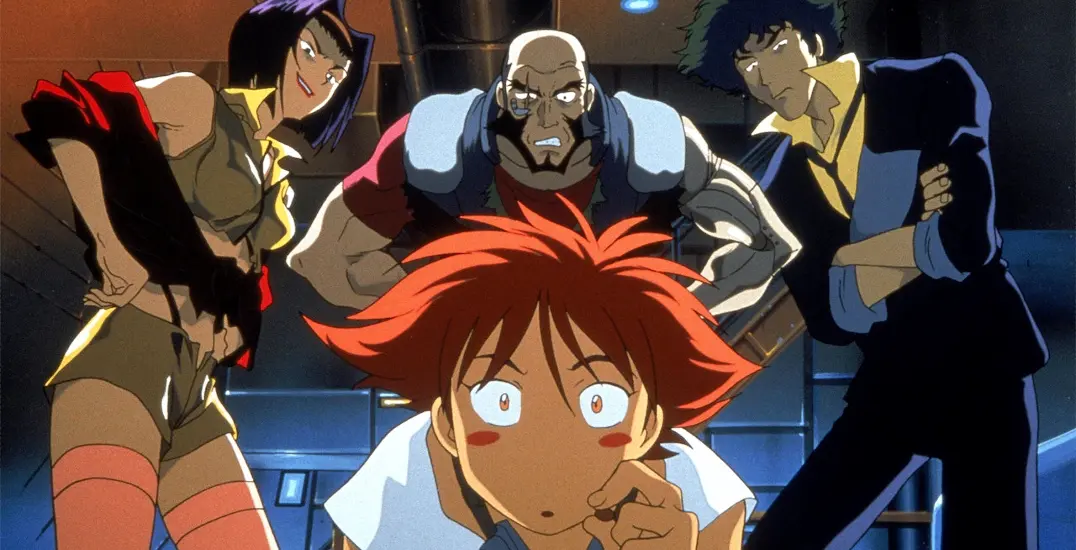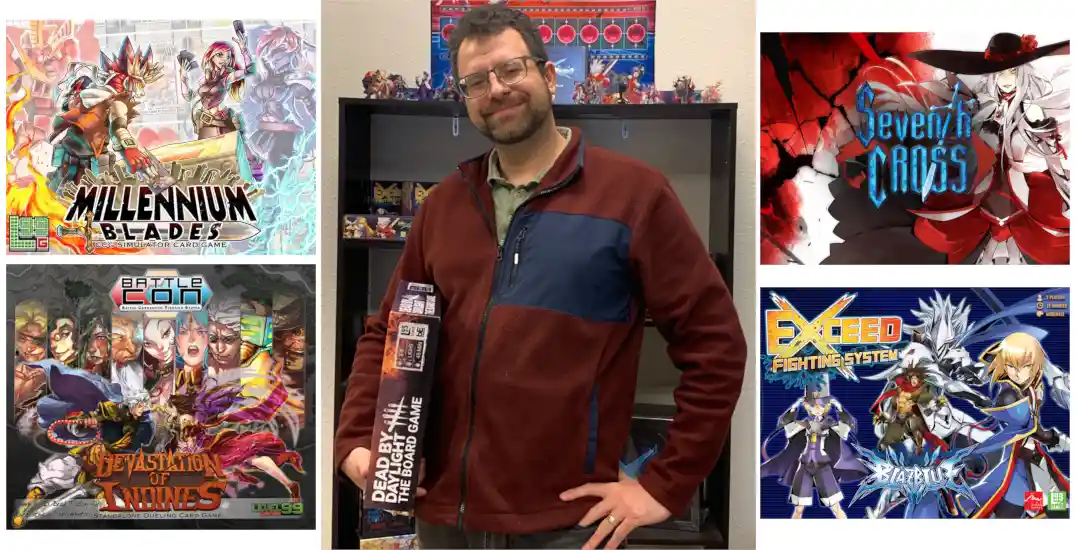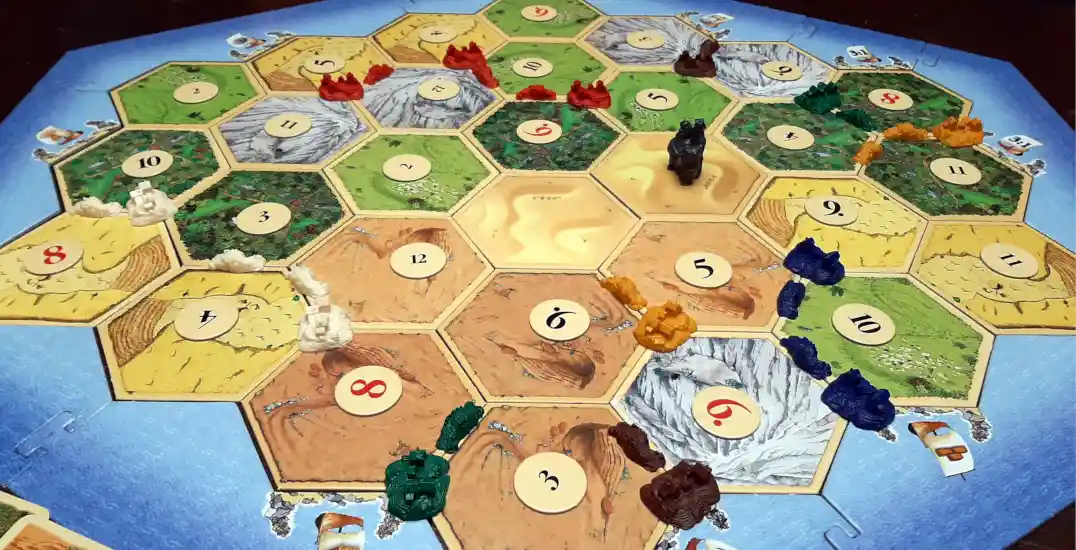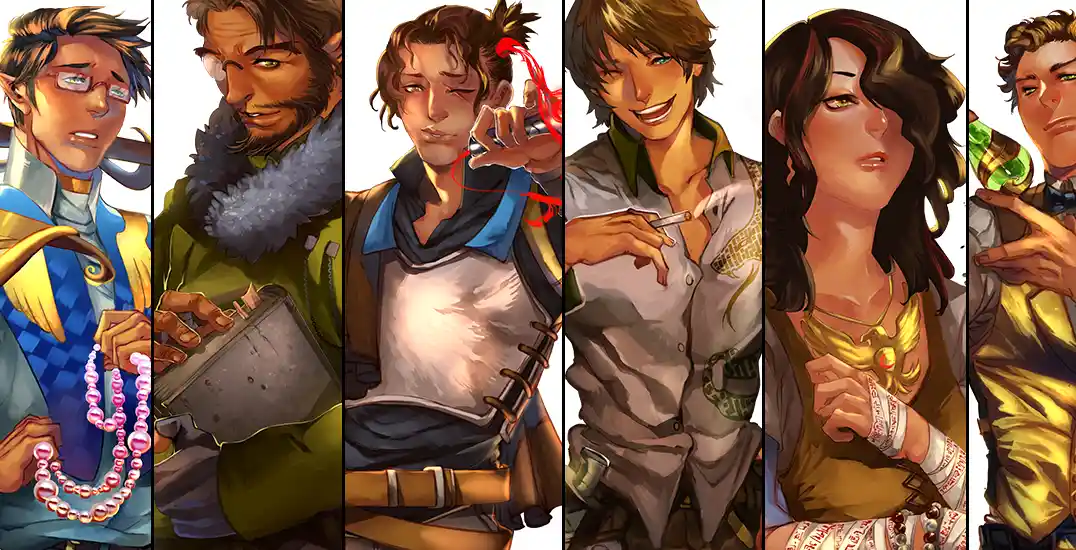
When it comes to Level 99, it’s impossible not to think about anime and Japanese video games. From BattleCON to Argent the Consortium, their catalog draws an immense amount of inspiration from them, both in looks and gameplay. I interview Brad Talton, designer of Millennium Blades and head of Level 99 Games itself about his influences and the way his nerdy adolescence shapes his work today.
Where does the Level 99 aesthetic come from?
It definitely comes from my late teenage years, my own childhood. I was a big anime fan, as I’m sure you can imagine. I was in the anime club in my college, and actually studied abroad for a year in Japan. I have a minor in Japanese Language and speak it pretty well, although it has been a decade since I studied it. I’m a fan of all Japanese culture, anime in particular, but their mythology is fascinating to me.
There were a lot of great influences. I really like the classic sort of older shōnen1 anime like Outlaw Star, Trigun and Cowboy Bebop. All those series had a large influence on me as did Galaxy Express 999 and also Excel Saga. These days I don’t keep up like I used to but it’s still part of our office culture. There are five of us working here and we share our favorite shows, animes and video games.
1. Shōnen – Literally “young boy”, it refers to the most popular demographic in anime and manga, which is generally aimed at male teenagers.
As a designer, what aspects of anime do you want to bring to the tabletop?
It’s really this sort of light-hearted seriousness. In anime you find serious characters in otherwise fantastical situations but they still manage to stay fantastical. They don’t get caught in the gritty roughness of real life in the way that, say, Game of Thrones might. Anime keeps this purity even in dire situations, even when things get really serious.
Their characters are highly iconic, easy to read. That’s a big asset in board games where players are going to sit down and engage with them. In just a few minutes they can understand what they are about, what they mean and what they are going to do.
 Level 99’s tagline is “Tabletop games for a video game generation”. What does that mean?
Level 99’s tagline is “Tabletop games for a video game generation”. What does that mean?
That wasn’t always our slogan. We kind of adopted it recently. However, it has always been part of the big idea behind the company. When we started, there were not that many games. Back then, and even today, I find that if I have friends who are into video games it’s hard for me to find a board game that appeals to them.
If you are playing Elden Ring and Dark Souls, you don’t want to play Monopoly or Ticket to Ride. You want to play something that engages with the material you are interested in, that is, fantasy and science-fiction stories with dynamic characters and the replayability and customization that video gamers are used to. Those are some of the best aspects of video games we want to bring to the tabletop.
What differences do you see between board game and video game fans?
The biggest difference is that video game players expect to sit down and get into games very quickly, learning as they play. This is at odds with some of our biggest titles which require a lot of front loaded information. Hence, we have been working to make our games more approachable. Video game players are also more comfortable with the idea of options that plug in and out and figuring out which way to play is best for them.
Above all, I think video game players value self-expression through play. Selecting your character and making your own identity in the game as a reflection of the “you” outside, that’s the biggest thing. All of our games have, as their first step, selecting a character or army or faction. You decide how to play before even getting started. That’s the largest conceit of video games we try to mirror in the tabletop.
Video game or anime influences are a deal breaker for many in the board game space, as it’s considered “too nerdy”. What do you make of that?
Well, you can’t please everyone. I remain focused on the people who are truly interested in what we are making. If you don’t like it, that’s on you. You don’t have to play it! This is art and we have to be true to our own designs. If players are willing to put up with that or if they really love it, that’s their decision and they should act accordingly. But we are not backing off.

As we’ve matured and seen our games be both well-reviewed and well-received, we’ve come to understand there’s people who are customers and people who are not. We don’t have to do a hard sell. We don’t have to make everyone like our games. What we have to do is make the best game for those who love it.
In the English mass market, it is harder to sell with anime artwork, that’s true. It hasn’t been an issue for Level 99 because our customers buy directly from us through Kickstarter, conventions or our online store. We have more freedom to do what we want to do and let our fans engage with us. When you are working the mass market, however, you have to do what Target or Barnes & Noble wants. You think about one big client with an outsized voice about how the product comes together.
Controversially, I believe both board games and video games are the same art form. Do you agree? Or do you think they are too different?
Tsk. Let me think about that. (He scratches his bread, covers his mouth with his fingers and hums. Then he looks at the ceiling in deep thought). It depends. I would say a game like Super Mario Bros is more like Dungeons and Dragons than it is to Settlers of Catan. The reason I say that is that, when you play Settlers, players are operating in a shared rules environment.
However, when you play Mario or D&D, you operate within the space of a creator who is in control of the full experience. In video games, the designer builds the whole environment players move in. They don’t play a part in the enforcement or upkeep of the rules. The game runs completely on the creator’s terms and that’s more like a roleplaying game. That’s my opinion of it (He smiles).

As a Westerner taking Japanese influences, how do you feel about that cultural exchange?
I’ve never thought about it too philosophically, I just follow my own interests and passions. If I think my friends are going to be into it, then I’m into making it. I design with them in mind and that guides a lot of our decisions. It’s more about the people I play with and the art than the nationalities or any specific cultural adaptation.
In the end, there are many ways to make money and a lot of industries but we chose to make board games. We do it because we love it and that’s the neatest thing about this industry. If you go to a trade show, everyone knows each other. We enjoy the shared community and culture board games bring and that’s the coolest thing.
Most boardgame productions in Japan are indie. You can get a lot of them at the likes of Comic Market. But it’s getting bigger and we’ve been getting a lot more interest from Japan. We’ve published Bullet, Millennium Blades and Empyreal: Spells & Steam in Japanese and we are looking at other games of ours to reach Japan.
Kind of going back to the roots?
(Laughing) Yes, yes, it all comes full circle! I actually have a great story. I talked to one Japanese publisher, the creator of Force of Will. I showed him BattleCON and he said “I can’t sell this in Japan, it’s too Japanese!” (We both laugh).
So I think they have the same issue as the Western Mass Market does! Western loan culture is so big over there. You can go to cafes there that look out of 1800s England and it’s so neat! You won’t find any place like that in England. But, in Japan, you can live that fantasy and it’s quite cool. They live it better than us Westerners do.

We are seeing a global adoption of boardgames. People who would have never thought of them before are now fully aware. I think the biggest change is the adoption of large licensed brands from roleplaying games and video games. Now you can play Monster Hunter: The Board Game and Bloodborne: The Board Game and Scott Pilgrim and Avatar; any big license you can think of probably has a tabletop game.
Tabletop games tap into what video gamers love and also what they are currently missing. It used to be that you would buy a cool collector’s edition and get all this neat stuff for your shelf. Some people still collect those but most of us just buy the game on Steam.
Yeah, most of us.
Now, even if you get a collector’s edition, all you get is a disk! It doesn’t come with all the stuff you used to expect. I remember when you bought Earthbound it came with a strategy guide and a big box with all sorts of things inside. I see you are looking up, may you got that?
Yes, yes, I do! (Laughs) You cannot see them, but I have old PC boxes right in front of me.
And you don’t get anymore, right? So, board games scratch that itch for collectors, for people who want to own a physical toy for the brands they enjoy. I think people are realising that board games fill the niche that boxed video games used to fill. Aside from that, they are just more approachable than they used to be.
We’ve reached a higher saturation, you can get them in mainstream stores and they show characters and themes you already know. They are easier to understand, too. It used to be that, when you talked about board games, it was either Monopoly or the Napoleonic Wars. But now there’s much more in-between those, players have a lot of choices. I think we’ll continue to move to the centre.



